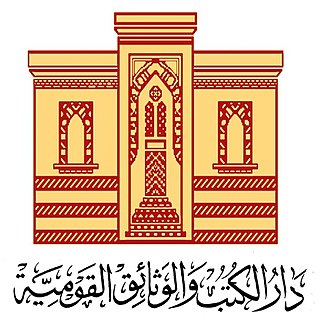 W
WBread has a significance beyond mere nutrition in many cultures in the Western world and Greater Middle East because of its history and contemporary importance. Bread is also significant in Christianity as one of the elements of the Eucharist; see sacramental bread. The word companion comes from Latin com- "with" + panis "bread".
 W
WThere is a rich and ancient culture in Eastern Arabia. The culture in this region has always been oriented towards the sea.
 W
WThe davul, tapan, atabal or tabl is a large double-headed drum that is played with mallets. It has many names depending on the country and region. These drums are commonly used in the music of Middle East. These drums have both a deep bass sound and a thin treble sound due to their construction and playing style, where different heads and sticks are used to produce different sounds on the same drum.
 W
WThe Egyptian National Library and Archives is located in Nile Corniche, Cairo and is the largest library in Egypt, followed by Al-Azhar University and the Bibliotheca Alexandrina. The Egyptian National Library and Archives are a non-profit government organization.
 W
WMany matters of etiquette in the Middle East are connected to Islam as it is written in the Qur'an and how it has been traditionally understood and practiced throughout the centuries. Prescribed Islamic etiquette is referred to as Adab, and described as "refinement, good manners, morals, ethics, decorum, decency, humaneness and righteousness".
 W
WThe Ghawazi is a local practice describing female dancers who dance in return of money; the male version of the practice is described as "khawal". They first started as few Egyptian Domari who refused to dance for free unlike the common habit among all Egypt, then the idea got extensively practiced and got developed among rural Egyptians or Fellahin, who also developed a more rural and traditional style accompanied by Rural Egyptian songs and colorful dresses of the Fellahin and became a theme of Rural Egypt. Over the years, Upper Egyptians (Sa'idis) mastered and then developed a different style of traditional Saidi dancing that's accompanied by Egyptian mizmar flute and Qena and Assuit's traditional female clothing of Telli (Egyptian Arabic: تلي)) , a super silky type of local fabric. That Upper Egyptian style is the most famous, where the dancer is accompanied by a traditional Upper Egyptian Mizmar and a singer singing and narrating folk-songs in "Saidi Arabic" about local hereos and popular love stories in towns.
 W
WHellenistic philosophy is the period of Western philosophy and Ancient Greek philosophy during the Hellenistic period.
 W
WHinduism can be found in the Arab world from the mid of 19th century, millions of members of the Indian diaspora, of different religions, reside and work in Arab states of the Persian Gulf. Many of them are Hindu. Many came due to the migration of Indians and Nepalese expatriates and employees to the oil-rich states around the Persian Gulf.
 W
WHinduism is a minority faith in Oman practised by 5.5% of its population. Oman is the only country in the Middle East with an indigenous Hindu minority. Hindus in Oman are represented by the religious organization Hindu Mahajan Temple.
 W
WHuman rights in the Middle East have been shaped by the legal and political development of international human rights law after the Second World War, and their application to the Middle East. The 2004 United Nations Arab Human Development Report (AHDR) claimed that although Arab-Islamic tradition does hold unique importance for ideas of human welfare, History has proven that "they were not sufficiently prevalent in society to foster a culture based on a political contract, and allow for the legitimacy of differences of opinion, dialogue and transfer of power." Issues of the validity of democracy in the region and human rights are at the very centre of the challenges facing Middle Eastern society today.
 W
WThe khawal was a traditional native Egyptian male dancer cross-dressed in feminine attire and was popular up until the late eighteenth and early nineteenth centuries.
 W
WThe köçek was typically a very handsome young male rakkas, or dancer, who usually cross-dressed in feminine attire, and was employed as an entertainer.
 W
WMiddle Eastern philosophy includes the various philosophies of the Middle East regions, including the Fertile Crescent and Iran. Traditions include Ancient Egyptian philosophy, Babylonian philosophy, Jewish philosophy, Iranian/Persian philosophy, and Islamic philosophy.
 W
WIn Arabic music, a mizmār is any single or double reed wind instrument. In Egypt, the term mizmar usually refers to the conical shawm that is called zurna in Turkey and Armenia.
 W
WThe qanun, kanun, ganoun or kanoon is a string instrument played either solo, or more often as part of an ensemble, in much of the Middle East, North Africa, West Africa, Central Asia, and Greece. The name derives from the Arabic word qanun, meaning "rule, law, norm, principle", which is borrowed from the ancient Greek word and musical instrument κανών (rule), which in Latin was called canon. Traditional and Classical musics executed on the qanun are based on Maqamat or Makamlar. The qanun traces its origins to a stringed Assyrian instrument from the Old Assyrian Empire, specifically from the nineteenth century BC in Mesopotamia. This instrument came inscribed on a box of elephant ivory found in the old Assyrian capital Nimrud, which is located about 35 km from the city of Mosul in Iraq. The instrument is a type of large zither with a thin trapezoidal soundboard that is famous for its unique melodramatic sound.
 W
WIn arab culture, particularly in levantine culture, zaffa, or wedding march, is a musical procession of bendir drums, bagpipes, horns, belly dancers and men carrying flaming swords. This is an ancient arab tradition that predates Islam. When the procession reaches its destination, usually the house of the bridegroom, there is usually a party, more loud noises, and then dinner.